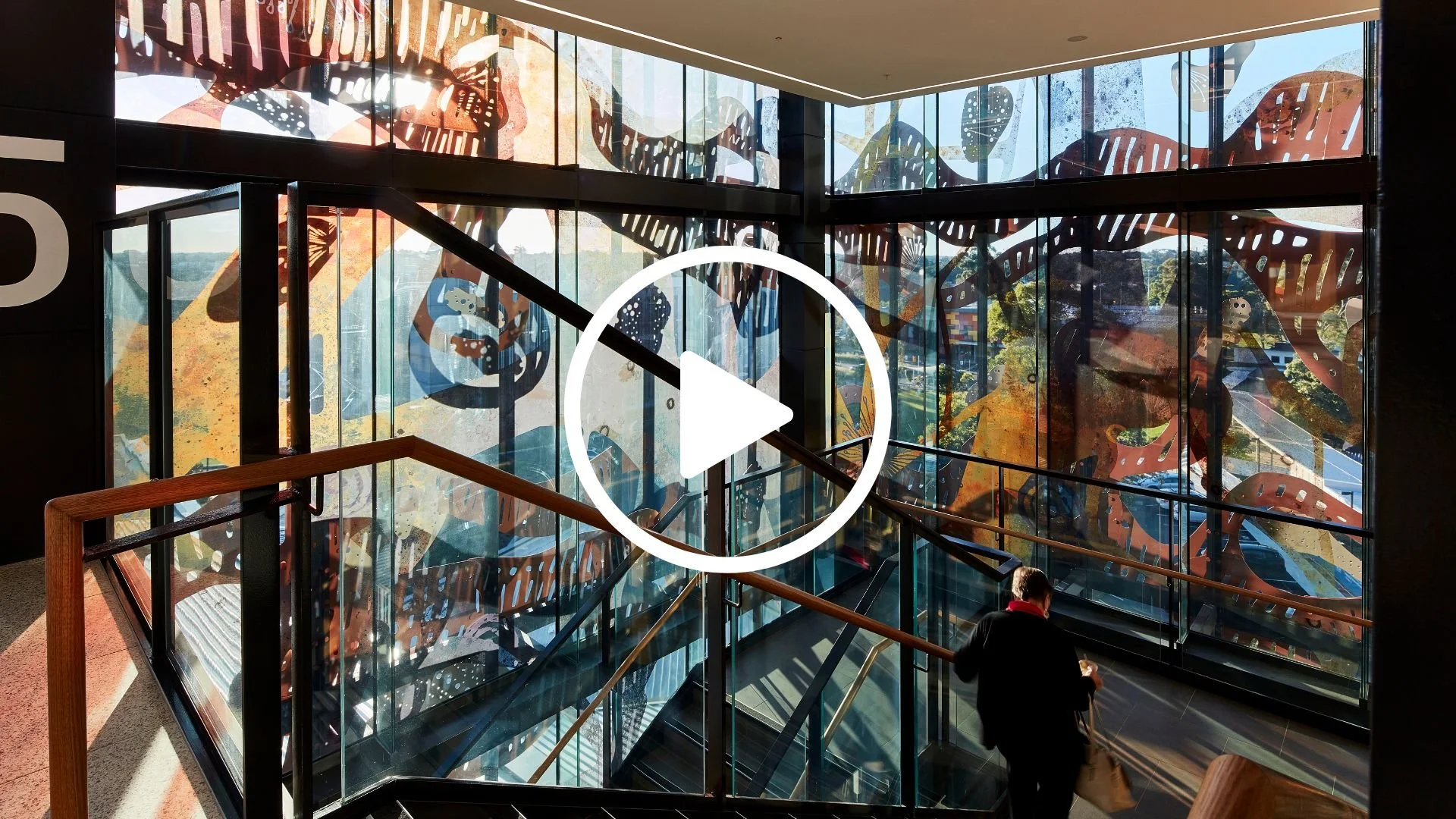The Angophora artwork concept was developed collaboratively by artists Jade Oakley and Jessica Birk, with the assistance of Emmaline Cox from Axolotl Art Projects.
The artwork is inspired by Angophora trees and aims to help to retain the memory of the large Angophora trees that have been removed from the site for the new building. Angophoras are a potent symbol of transformation and resilience and are associated with healing and the female form in Aboriginal culture.
The Angophora is an iconic tree. Muscular branches, curvaceous trunks, pink cellulite bark, with fleshy creases and bulbous protrusions, the Angophora is a Rubenesque dancer paused mid flourish.
In a colourful transformation, the Angophora sheds her bark annually. The blue-grey bark of the previous season peels off to reveal the rich terracotta of the new season’s bark. At the base of their great trunks, Angophoras have a large lignotuber which assists the tree to survive fire, whilst epicormic buds enable the tree to burst into vibrant regrowth. Where old branches have broken off the Angophora develops sheltered hollows perfect for birds to nest in. Through the poetry of association, the subject matter of the Angophora gives the artwork the themes of transformation, regrowth, shelter and resilience.
These themes are explored from each of the artists’ perspectives. Stories of the Angophora are embedded in Aboriginal culture, and in the early discussions of the artwork they have sparked many memories and provided overflowing inspiration for the direction of the artwork.
Jade and Jessica considered their approach to the facade carefully to ensure collaboration would result in the creation of a unified and harmonious artwork, strengthened by each artist’s narrative and experience.
The artwork consists of two unique layers of patterning, created by each artist. Jade’s illustrations created the structure of the ‘dancing’ trunk and branches of the Angophora tree in the glass interlayer and the screen patterns which meditate on the peeling bark pattern. While Jessica’s painted glass interlayer explores the colours, character and seasons through rich pattern and colour.
The artwork’s location demands a dynamic approach to materiality, as it is viewed both as the external facade at the entry of the hospital, and from within. It plays an important role in placemaking and welcoming visitors, patients and staff. The artwork appears as a glowing light box, a welcoming beacon at the entry, and affords views from both sides of the glass, up close and from afar.
Axolotl Art Projects assisted in the development of the artists’ concepts, digital development of the patterns and technical knowledge of transferring print and illustration into architecture.
Conversations with the artists on the concept and the feeling the artists were trying to convey in the artwork guided the design process. From this, Axolotl was able to propose materials and solutions that helped achieve the best outcomes for the artwork. The multi-layer screening as an example has the engineering requirement to be built from laser-cut aluminium affixed over an access gantry. To minimise the impact of the structure, the screening layout was developed with the artists to conceal the framework. As it was important that the artwork conveyed the natural quality and colour of the Angophora, the team experimented with colours and textures and introduced two custom Axolotl Terracotta treatments to the screening layer. This provided an outcome superior to powder coating alone, and only achievable with Axolotl Terracotta surfaces created with natural materials that live and breathe like solid Terracotta.
In loving memory of Jessica Birk, strong Yaegl woman, who lived in the Northern Beaches of Sydney and passed away in 2019 during the delivery of the artwork.
Art Management Creative Road
Photography and Videography Steve Brown






